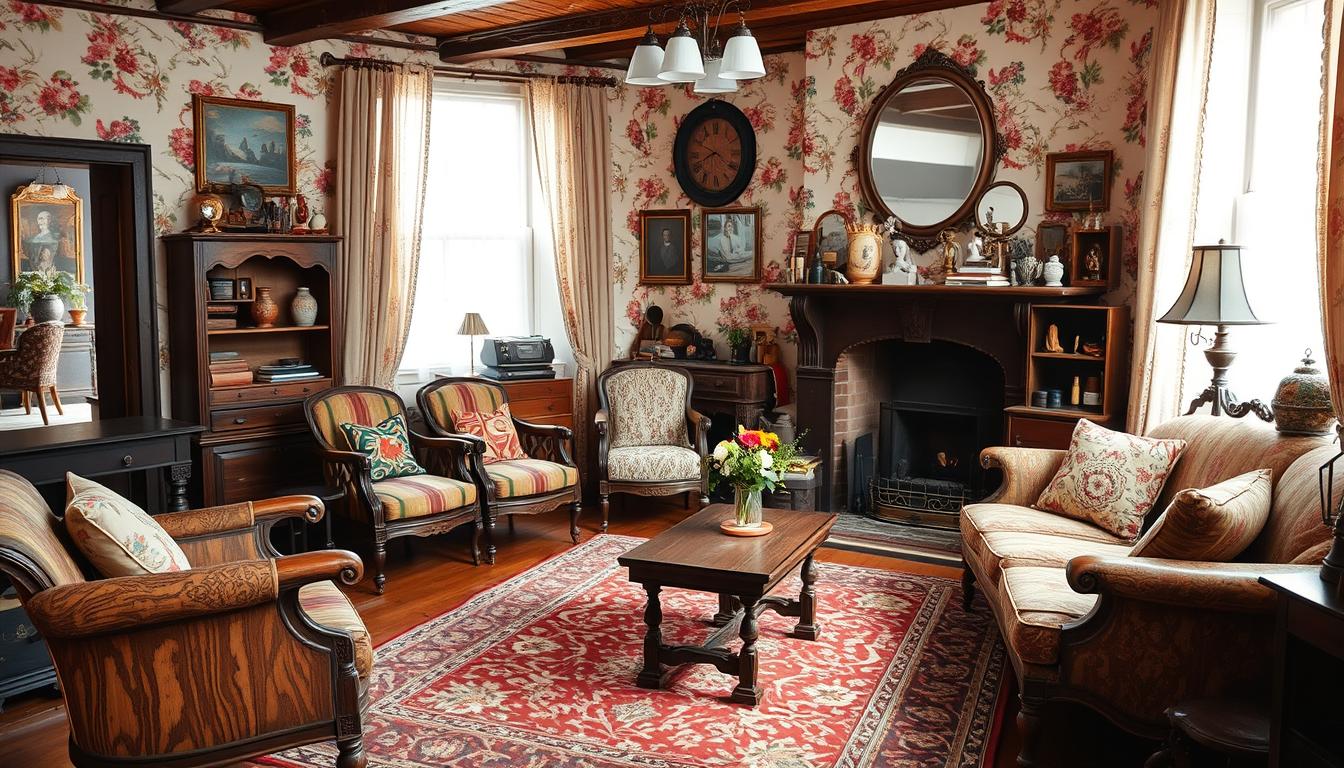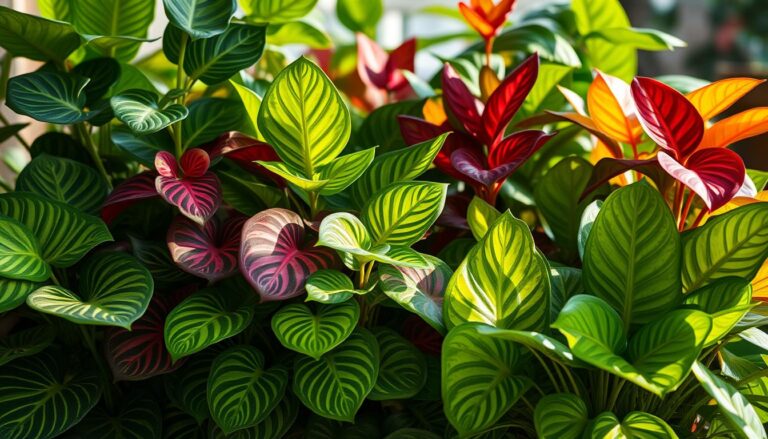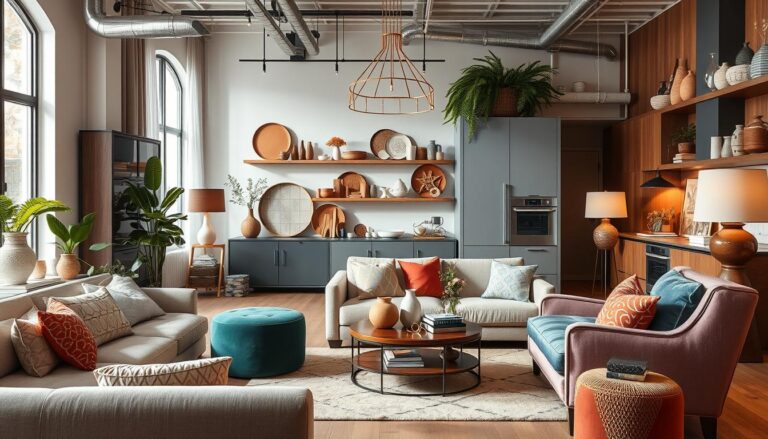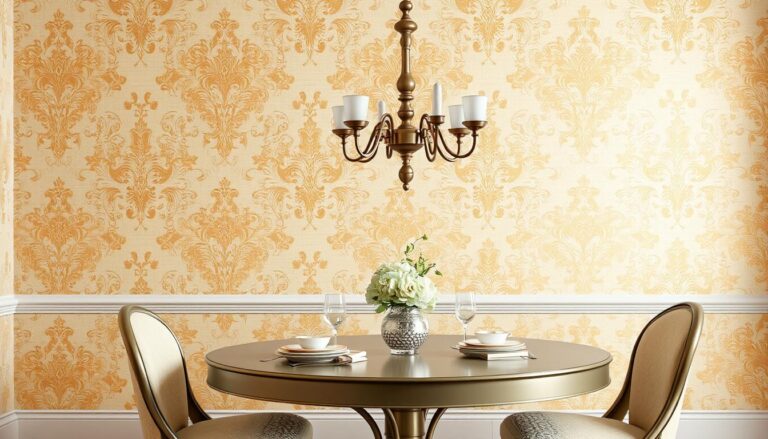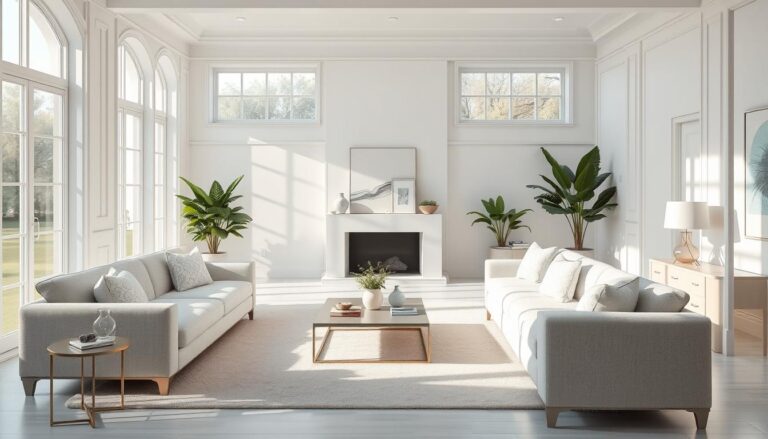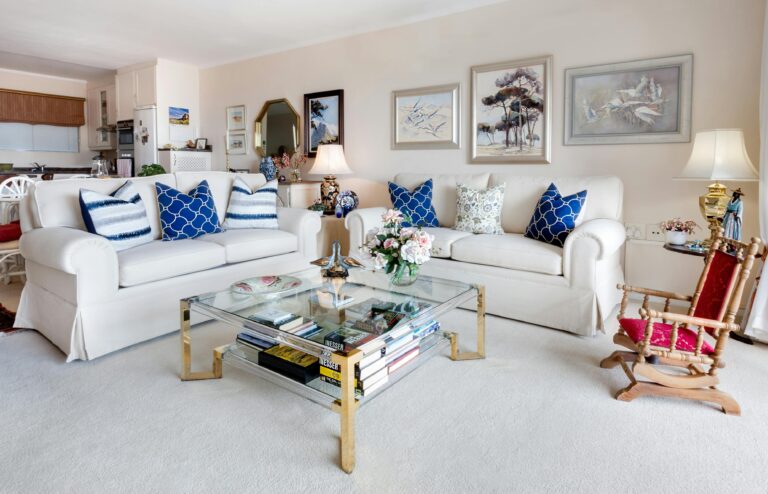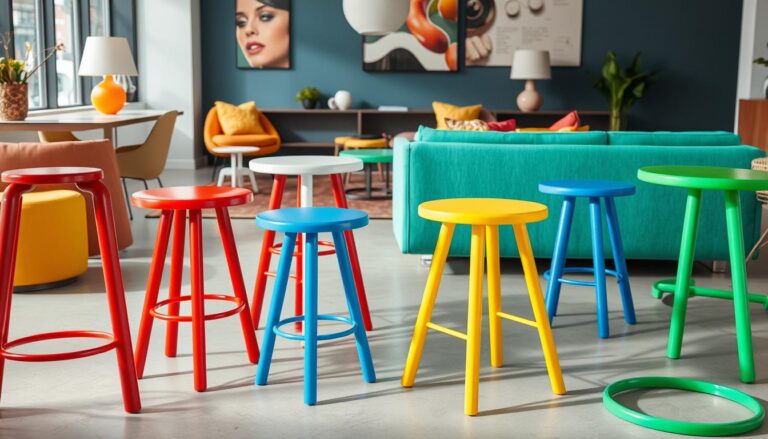Revamp Your Home with Vintage Decor
Visiting my grandmother’s living room was always magical. The vintage decor told stories of the past. Each piece of antique furniture shared secrets from long ago.
This memory sparked my love for blending old and new in home design. Vintage decor is more than just old items. It turns your home into a personal museum of memories and style.
Whether you love the 1950s retro style or early 20th-century elegance, vintage decor lets you express yourself. This guide will take you through the world of vintage design.
You’ll learn how to pick, style, and mix timeless pieces in your home. We’ll cover understanding vintage styles and practical tips for finding them. Together, we’ll make your home beautiful and meaningful.
Key Takeaways
-
Vintage decor is more than decoration; it tells personal stories
-
Every antique piece has its own historical significance
-
Mixing vintage with modern creates dynamic interiors
-
Vintage decor shows off your creativity and style
-
Choosing the right pieces can turn any space into something special
Understanding the Charm of Vintage Home Decor
Vintage home decor adds a special touch to any room. It combines history with personal style. It’s not just about decorating; it’s about telling your story through unique pieces.
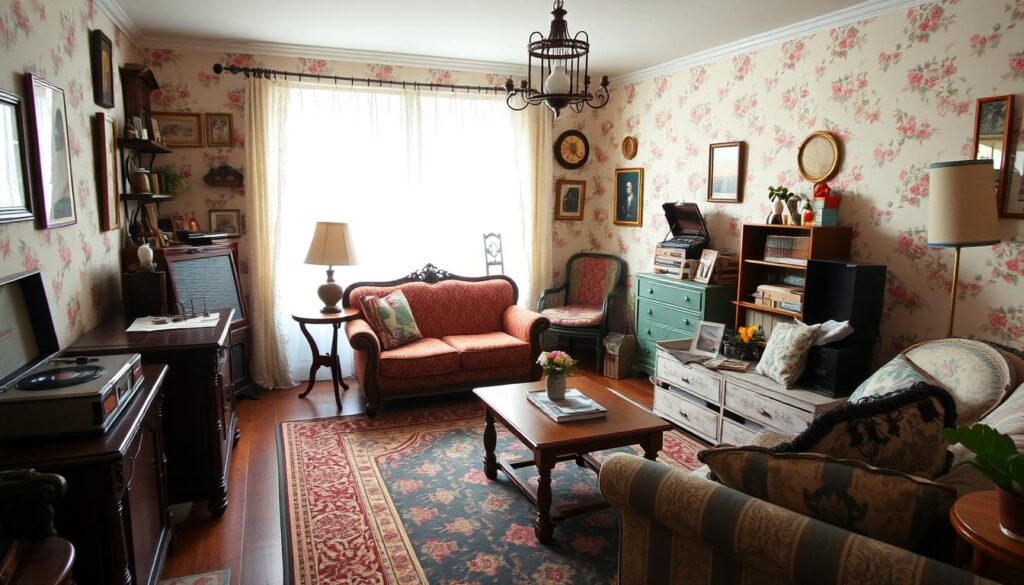
Defining Vintage vs. Antique Styles
Vintage and antique furniture are often confused, but they’re different. Vintage items are 20 to 100 years old, showing off a certain era’s style. Antique furniture, on the other hand, is over 100 years old.
-
Vintage: 20-100 years old
-
Antique: 100+ years old
-
Retro style: Deliberately mimicking a past design trend
The Historical Impact on Modern Design
Retro style still shapes today’s interior design. Designers often look to mid-century modern and art deco for inspiration. These styles add depth and character to modern homes.
“Great design is timeless, and vintage pieces prove that beauty transcends generations.” – Design Historian
Benefits of Choosing Vintage Pieces
Benefit |
Description |
|---|---|
Sustainability |
Using vintage furniture cuts down on waste and helps the environment |
Unique Character |
Every piece has its own story, making your space truly special |
Quality Craftsmanship |
Older furniture is often made with better materials and care |
Choosing vintage decor makes your home a reflection of your history and style. It turns your space into a collection of meaningful items. These pieces spark conversations and celebrate artistic heritage.
Getting Started: Essential Tips for Vintage Decorating
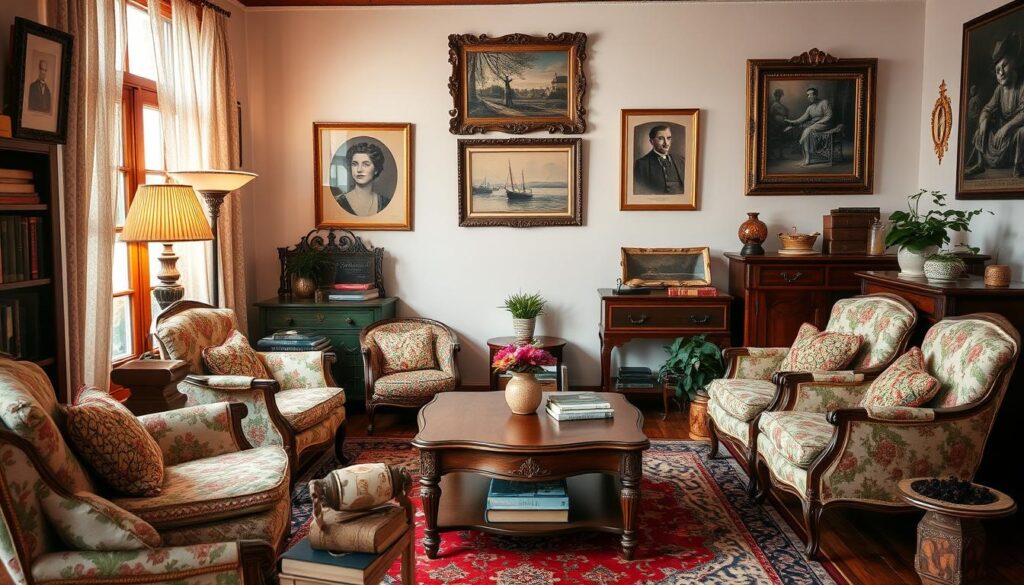
Starting a vintage home decor journey can seem daunting. But, with the right steps, you can turn your space into a unique reflection of your style. Vintage decorating is more than just collecting old items. It’s about telling a story with each piece you choose.
“Vintage decor tells a story that modern furniture simply cannot replicate.”
Here are some key tips to begin your vintage decorating journey:
-
Research different vintage design periods
-
Set a realistic budget for flea market finds
-
Learn to identify quality repurposed decor
-
Develop a cohesive color palette
Your approach to vintage home decor should mix authenticity with practicality. Not every item needs to be an original. Sometimes, a well-chosen reproduction can capture the vintage style you want, while staying within your budget.
Vintage Style |
Key Characteristics |
Recommended Budget Range |
|---|---|---|
Mid-Century Modern |
Clean lines, minimal design |
$200-$1000 |
Industrial |
Metal accents, raw materials |
$150-$800 |
Farmhouse |
Rustic, weathered finishes |
$100-$600 |
Begin with a small vintage home decor collection. Explore local flea markets, antique shops, and estate sales for unique pieces. Building a vintage-inspired space is a gradual process. It should reflect your personal taste and story.
Mid-Century Modern: Incorporating Retro Style Elements
The mid-century modern design is still loved for its elegance and practicality. It’s more than a trend; it’s a tribute to clean lines, organic shapes, and creative work from the past.
Signature Mid-Century Furniture Pieces
Looking at mid-century modern furniture, focus on the iconic items. These include:
-
Eames lounge chairs with sleek leather upholstery
-
Tulip tables with smooth, sculptural bases
-
Minimalist credenzas with tapered legs
-
Pendant lighting with geometric shapes
Color Palettes and Patterns
The retro style loves bold colors and unique patterns. Common mid-century modern colors are:
Color Category |
Characteristic Shades |
|---|---|
Warm Tones |
Mustard yellow, burnt orange, olive green |
Cool Tones |
Teal, aqua, seafoam green |
Neutral Bases |
Warm browns, soft grays, cream |
Iconic Designers to Know
Knowing the pioneers of mid-century modern design is key. Charles and Ray Eames, Eero Saarinen, and Arne Jacobsen changed furniture design with their fresh ideas.
“Design is a plan for arranging elements in such a way as best to accomplish a particular purpose.” – Charles Eames
By adding these mid-century modern touches, you can make your space elegant and timeless. It honors a significant design era.
Creating a Shabby Chic Haven in Your Space
Turning your home into a shabby chic haven adds a soft, romantic feel. It’s both elegant and cozy. This style loves imperfections, making your space tell a story with each piece.
To start your shabby chic journey, focus on key elements:
-
Soft pastel colors like blush pink, mint green, and ivory
-
Furniture with a gentle wear and aged look
-
Vintage linens and floral patterns
-
Ornate frames and delicate decor
When picking furniture, look for:
-
Weathered wood
-
Chipped paint
-
Romantic curves
-
Feminine shapes
“Shabby chic is about creating beauty from imperfection” – Design Expert
To really get into this style, mix old with new. Pair an antique chandelier with modern walls, or a distressed table with sleek chairs. The goal is a space that’s both nostalgic and modern.
Your shabby chic home should show off your personality. It’s about blending comfort with timeless beauty. Let imperfect pieces tell your story and make your home warm and welcoming.
Farmhouse Decor: Blending Rustic with Vintage
Farmhouse decor is a popular style that brings the warmth of rural life into modern homes. It mixes rustic touches with vintage charm. This creates spaces that are both nostalgic and modern.
To get the farmhouse look right, you need to balance comfort and simplicity. Your home can become a cozy retreat. It celebrates traditional design while being modern.
Essential Farmhouse Elements
-
Natural wood surfaces
-
Neutral color palettes
-
Vintage metal accessories
-
Distressed furniture pieces
Mixing Old and New Pieces
The secret to great farmhouse decor is blending vintage and modern items. Your rustic pieces should match your modern items. This makes your space welcoming and inviting.
Vintage Pieces |
Modern Counterparts |
|---|---|
Antique wooden table |
Sleek metal chairs |
Weathered picture frames |
Minimalist wall art |
Vintage milk jugs |
Contemporary lighting fixtures |
Creating Focal Points
Design your space around standout pieces. A reclaimed barn door, a vintage farmhouse sink, or a big rustic mirror can be the room’s centerpiece. They tell a story of timeless design.
“Farmhouse style is about creating a space that feels lived-in, loved, and tells a story.” – Design Expert
Remember, farmhouse decor is about warmth, not perfection. It’s about making a space that feels welcoming. It shows your personal style and love for heritage design.
Where to Source Authentic Vintage Pieces
Finding unique antique furniture takes skill and a sharp eye. True vintage lovers know the best finds aren’t in regular stores. They’re hidden in special places.
Your search for vintage treasures can take you to amazing flea markets. Here are some places to explore:
-
Local Antique Shops
-
Neighborhood Flea Markets
-
Estate Sales
-
Online Marketplaces
-
Specialized Vintage Websites
When you’re hunting for flea market finds, learn these important skills:
-
Learn to spot real antique furniture
-
Get good at negotiating prices
-
Know how to restore items
-
Make friends with trusted dealers
“The beauty of vintage hunting is discovering pieces with stories waiting to be retold in your home.”
Online sites like Etsy, eBay, and Facebook Marketplace have opened up new ways to shop for vintage. These platforms connect you with unique antique furniture worldwide. This makes finding rare items easier than ever.
Always check the item’s history, look at its condition closely, and listen to your gut. Choose vintage pieces that match your style.
Vintage Lighting: Illuminating Your Space with Character
Vintage lighting turns ordinary spaces into design wonders. It’s perfect for those who love antique furniture or unique decor. It brings warmth and personality to your home.
Popular Vintage Lighting Styles
Discover the charm of vintage lighting with these styles:
-
Art Deco Glamour: Geometric shapes and metallic finishes
-
Mid-Century Modern: Sleek lines and minimalist designs
-
Industrial Chic: Exposed bulbs and raw metal fixtures
-
Victorian Elegance: Ornate chandeliers and intricate details
Installation and Safety Considerations
When adding vintage lighting, safety is key. Old electrical systems might need a pro check and possible rewiring. Get an electrician who knows antique and vintage fixtures for safe installation.
“Vintage lighting is not just about illumination, but about creating a story within your space.” – Design Experts
Maintenance Tips
Keep your vintage lighting looking great with these tips:
-
Clean delicate fixtures with soft, dry cloths
-
Avoid harsh chemicals that might damage vintage finishes
-
Store replacement parts for rare vintage lighting
-
Use low-wattage LED bulbs to protect aging sockets
Choosing and caring for vintage lighting adds a stunning touch to your home. It celebrates design history and lights up your space with unique charm.
DIY Restoration and Upcycling Projects
Turning old items into beautiful decor is an art. It gives new life to things that were once forgotten. Your journey starts by seeing the potential in old, worn-out pieces.
“One person’s trash is another’s treasure” – this is true in the world of vintage restoration!
Begin your DIY project with these key techniques for fixing up vintage items:
-
Furniture Refinishing
-
Sand surfaces carefully
-
Choose the right paint or stain
-
Apply a clear sealant
-
-
Reupholstery Basics
-
Pick fabrics that last and match well
-
Take out the old fabric carefully
-
Measure and cut the new fabric right
-
-
Creative Repurposing Ideas
-
Make old ladders into shelves
-
Turn vintage suitcases into tables
-
Use mason jars as lights
-
Pro tip: Always learn about the item’s history before you start. Some vintage things are more valuable because of their age and wear.
For your project, you’ll need sandpaper, primer, good paint, an upholstery stapler, and lots of creativity. Remember, working with vintage items takes patience. Each piece has a story to tell, waiting to be rediscovered.
Styling Different Rooms with Vintage Finds
Turning your home into a vintage haven is an art. It adds character and soul to every room. Each space is a chance to show off antique furniture and make a space that reflects you.
Living Room Arrangements
Make your living room a story with vintage pieces. Pair a sleek mid-century modern sofa with an ornate antique coffee table. Mix textures and styles for interest.
-
Select a statement vintage armchair as a focal point
-
Layer vintage area rugs for depth and warmth
-
Display curated antique furniture collections
Bedroom Sanctuary Ideas
Turn your bedroom into a peaceful haven with vintage decor. An authentic brass bed frame sets the tone. Add vintage nightstands and soft, aged linens for a cozy feel.
Kitchen and Dining Areas
Vintage Element |
Styling Tip |
|---|---|
Enamelware |
Display on open shelving or hanging racks |
Farmhouse Table |
Pair with modern chairs for eclectic look |
Vintage Copper Cookware |
Hang as functional wall art |
“Vintage pieces are not just decorations, they’re conversations waiting to happen.” – Design Enthusiast
Integrating antique furniture is about finding harmony. Each room should feel carefully chosen, not crowded. Let your vintage finds share their stories while showing off your style.
Maintaining and Caring for Vintage Decor
Keeping your antique furniture and vintage decor in top shape is key. These items are not just for looks; they’re valuable and need special care.
Understanding the needs of different materials is crucial. Wooden pieces, for example, require specific cleaning and protection to keep their beauty and strength.
-
Dust delicate surfaces with soft microfiber cloths
-
Avoid harsh chemical cleaners on vintage materials
-
Use natural wax or specialized wood preservation products
-
Control humidity to prevent wood warping
For valuable or fragile items, professional restoration might be needed. Experts can fix damages and keep the piece’s history intact.
Material Type |
Cleaning Method |
Preservation Technique |
|---|---|---|
Wooden Furniture |
Soft cloth dusting |
Natural beeswax polish |
Upholstered Pieces |
Gentle vacuum cleaning |
Professional fabric treatment |
Metal Accessories |
Non-abrasive cleaner |
Rust prevention coating |
“Vintage pieces tell stories – protect them with knowledge and care.”

